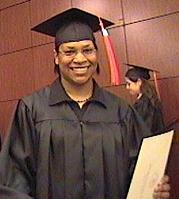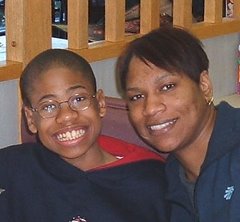By Dan Olmsted
Published 5/20/2005
WASHINGTON, May 20 (UPI) -- The cases of autism among the Amish that I've identified over the past several weeks appear to have at least one link -- a link made of mercury.
That's not something I expected to encounter. I had been looking for an unvaccinated population to test the controversial idea that vaccines, and in particular the mercury-based preservative called thimerosal, could be behind the apparent rise in autism cases over the past decade.
The concept: If the Amish have little or no autism, it might point a finger at something to which they have not been exposed.
Most of the medical establishment, it must be stated upfront, considers the idea that thimerosal could have played a role in the rise of autism disproven and dangerous. As noted in the last column, however, the director of the Centers for Disease Control and Prevention says she has "an open mind" about that possibility.
So do I, having come across correlations that made me want to look more closely at thimerosal. For instance, the first child diagnosed with autism in the United States was born in 1931, the same year thimerosal was first used in a vaccine. And autism diagnoses exploded in the 1990s, the same decade children got an increasing number of thimerosal-containing vaccines (it was phased out starting in 1999). Tantalizing, but proof of nothing.
So I turned to the 22,000 Amish in Lancaster County, Pa. I didn't expect to find many, if any, vaccinated Amish: they have a religious exemption from the otherwise mandatory U.S. vaccination schedule. When German measles broke out among Amish in Pennsylvania in 1991, the CDC reported that just one of 51 pregnant women they studied had ever been vaccinated against it.
To cut to the chase, what I've found to date is very little evidence of autism among the Amish in Lancaster County, far below the 1 in 166 rate of Autism Spectrum Disorders the CDC cites for children born in the United States today. I don't discount the idea that they might be more difficult to find or diagnose, and I'm still looking.
I did find three or possibly four children with autism and, weirdly, a possible link to vaccinations. One was a child adopted from China, where she got all her vaccinations before being vaccinated all over again when she got to the states. Her Amish-Mennonite mother said she believes that vaccine load caused her autism. The mother told me about another child who had what she described as an immediate vaccine reaction that left her autistic at age 15 months.
That mother said a minority of younger Amish have begun getting their children vaccinated, though a local doctor who has treated thousands of Amish said the rate is still less than 1 percent.
The pattern I was noticing then took an interesting twist. From a doctor's posting on an alternative health Web site, I learned about several cases of autism among Amish children who had not, in fact, been vaccinated.
I called that doctor, Lawrence Leichtman, at his office in Virginia Beach, Va. A pediatrician and geneticist who has been widely published in medical journals, he told me he was treating six unvaccinated Amish children and adolescents -- three from Pennsylvania, including one from Lancaster County; two from Ohio, and one from Texas.
That seemed to render any relationship between autism and mercury exposure in the Amish less likely. But, not after what Leichtman said next.
"By the way," he volunteered, "four of these six kids all have elevated mercury. The only two that don't, one of them is from Texas and one is from Iowa. But all of the people in Pennsylvania and one of the people in Iowa have elevated mercury."
Given what I had already come across in Lancaster County, I wanted to hear more about that. Were the mercury levels significantly higher? I asked. "Oh yes," he responded.
What did he think was going on?
"The people in Pennsylvania, I've actually tracked back on them," Leichtman said. "There's definitely a plume from one of the coal-fired power plants that just goes right over them. And the one in Iowa, it's a little less obvious because actually he's in the Amana Colonies, but I have seen reports of the area around Amana having elevated levels of mercury in the environment."
As it happens, the Pittsburgh Post reported last week that Pennsylvania has four of the nation's 10 "dirtiest power plants." Mercury is a byproduct of coal combustion.
Leichtman also believes that northern states "get most of the prevailing wind that comes across the Pacific. You get that trans-Pacific flow which is all Chinese mercury. We're getting a load of Chinese mercury, as far as I can tell."
Leichtman's comments meant that the two people I talked to, who knew anything about autism among the Amish, independently brought up mercury exposure -- in vaccines and in the environment-- as the cause of most of the cases.
That's a link others have made, although not to the Amish, whose autism prevalence has apparently never been studied:
- "We believe that thimerosal and environmental mercury -- which are worldwide pollutants -- are behind the surge" in autism in the 1990s, wrote Sallie Bernard in 2002. She is a founder of the group Safe Minds, which wants mercury out of all medical products. Bernard co-authored a controversial 1999 study about thimerosal, "Autism: A novel form of mercury poisoning."
- "In the end it is mercury in the brain that causes such problems, and that mercury can come from several sources," said Boyd Haley, chairman of the chemistry department at the University of Kentucky and another maverick on thimerosal.
"Therefore, a logical approach is to think that all mercury exposures are additive, even if some may be more causative than others."
Haley cited a recent Texas study, first reported by United Press International in March, that found an association between autism rates and exposure to industrial mercury emissions in Texas counties. One county with high autism but low exposure to mercury emissions turned out on closer inspection to be the site of a huge abandoned mercury mine, the researchers found.
Leichtman believes the damage to children is being done by environmental mercury, not the mercury in vaccines (my own research makes me think that if it's either, it's both). He said he can detect elevated mercury levels in about half his 500 autism patients.
"Environmental mercury is horrible," he said, "and I think that's where it's coming from. To me, people with autism are the canaries in the coal mine. A lot of them are reflecting the damage from all of that."
Leichtman, like a number of other doctors, is trying to flush mercury out of autistic children through a process called chelation (key-LAY-shun).
Chelation as a treatment for autism is unproven and controversial (what about autism is not unproven and controversial?), and it carries a risk of serious side effects. Chelation has been used for 40 years in cases of heavy metal toxicity, including lead poisoning.
But does it help children with autism?
"The people in Pennsylvania wouldn't take chelation," Leichtman said, and noted the Amish aversion to medical procedures and drugs. "One in Iowa did. He certainly did better."
We'll look at chelation and its implications in the next column.
-0-
e-mail: dolmsted@upi.com
Copyright © 2001-2005 United Press International
Article at:
http://www.upi.com/view.cfm?StoryID=20050518-065621-1970r
Below are links to earlier articles in Dan Olmsted series. http://www.washtimes.com/upi-breaking/20050321-115921-9566r.htmhttp://washingtontimes.com/upi-breaking/20050417-052541-5549r.htmhttp://www.washtimes.com/upi-breaking/20050420-042247-8776r.htmhttp://www.washtimes.com/upi-breaking/20050420-042117-2803r.htmhttp://www.washtimes.com/upi-breaking/20050126-113404-1472r.htmhttp://www.washtimes.com/upi-breaking/20050203-030807-6482r.htmhttp://www.washtimes.com/upi-breaking/20050222-010118-1074r.htmhttp://www.washtimes.com/upi-breaking/20050302-120651-3833r.htmhttp://www.washtimes.com/upi-breaking/20050228-053300-1821r.htmhttp://www.washtimes.com/upi-breaking/20050314-052518-7615r.htmhttp://www.washtimes.com/upi-breaking/20050508-082911-5005r.htmhttp://www.washtimes.com/upi-breaking/20050508-112601-3643r.htmhttp://www.washtimes.com/upi-breaking/20050317-021624-9394r.htm
For more information and resources on autism, go to: http://www.autismconcepts.com/.
Forget what you haven't heard… Family site shares news, resources, announcements and free or low-cost ways to help us manage day-to-day living with autism.
Crystal Brown

About Me

- Crystal
- AutismConcepts.com and Child-Autism-Parent-Cafe.com share a large collection of useful autism information, resources, and how-to articles written by authors who are touched by autism, offering practical solutions to families. Particularly minority and underserved families and caregivers who may not know what to do or where to go for help.
MJ And Me

Blog Archive
-
▼
2005
(194)
-
▼
May
(22)
- A child's return from autism
- Oily fish hope in fight against child autism
- The Age of Autism: Mercury and the Amish
- 2004/2005 U.S. Dept. of Education Autism Figures a...
- Foundation for Autism Information and Research - F...
- The Age of Autism Mercury ascending
- 'Recovered Autistic Children' Video
- Autism may be linked to difficult births
- Multisensory Reading Program
- Early identification can help prevent reading disa...
- Music Therapy Article and Resources
- What's New in the New IDEA? Frequently Asked Quest...
- Discovery of 'irony' brain areas
- African Americans Are Moving Into the Digital Age ...
- Behavioral traits in kids can predict autism:
- Autism Society of Michigan files lawsuit against s...
- Families fight for autism funding
- Better Lives for People with Autism: Behavioral Tr...
- New Hope for Early Autism Diagnosis
- Study: Autism Treatment Could be Earlier
- Autism could be detected in infants: studies
- Err on the side of caution: Get mercury out of vac...
-
▼
May
(22)